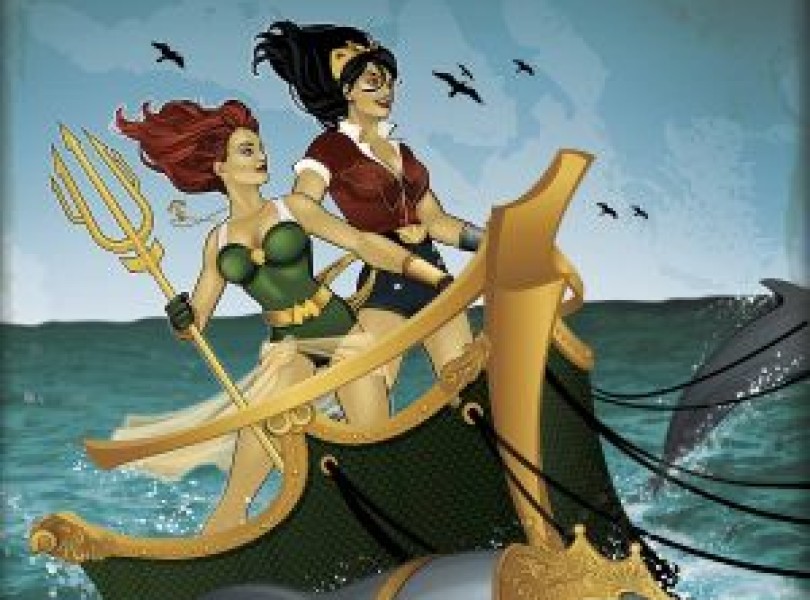The DC Bombshells line of statues is great, but there’s only the barest hint of a story behind those pinup-inspired character revamps. Somehow, writer Marguerite Bennett has been able to use that minimal source material as the foundation for a wildly entertaining comic that gives the DCU a fun, WWII-era makeover. The second issue doesn’t pack quite the visual punch of the first, but this series is really making the most of ts concept.
Bennett continues her rotating approach to the story in these three chapters. Right now the book is still very much concerned with providing origins for the various heroines before bringing them together as a group. Perhaps that gives the book a slightly disjointed feel overall, but the individual components are strong enough that this isn’t a huge concern. Bennett’s take on the origin of Wonder Woman is the most enjoyable of the bunch despite also being the most traditional (to be fair, the character does have her roots in this time period already). Bennett’s handling of Diana’s voice and the growing bond between her and Steve Trevor is enough to suggest that she needs to be writing an ongoing Wonder Woman series.

That’s not to say the other two chapters don’t impress. In one, Bennett continues her exploration of the most fundamentally changed characters in this universe – Supergirl and Stargirl. Re-imagining the duo as sisters and soldiers in the Soviet army has worked surprisingly well. With the Wonder Woman tale sticking so close to the usual formula, it’s nice to have another that strives to do something new. Meanwhile, this issue also introduces Zatanna and Joker’s Daughter into the mix in a new storyline that adds an extra dose of danger and intrigue to the conflict.
Sadly, artist Marguerite Sauvage is absent for these three chapters. It was never realistic to expect Sauvage to illustrate every chapter given this book’s weekly digital release schedule, but in the interest of consistency it might have been better to assign each artist a specific storyline. Of the trio of pencillers here, Laura Braga is the most adept at capturing the dynamic, sexy charm of Ant Lucia’s original character designs with her Wonder Woman pages. Stephen Mooney’s Supergirl/Stargirl is a little too dark and gritty for its own good (though the storybook interlude is a nice touch). Ted Naifeh captures the supernatural allure of the Zatanna story, but his figure work doesn’t always hold up when the action kicks in.


